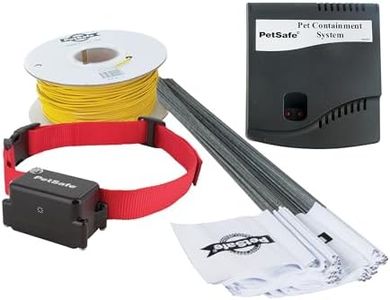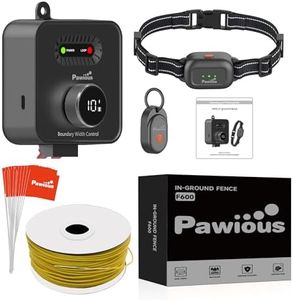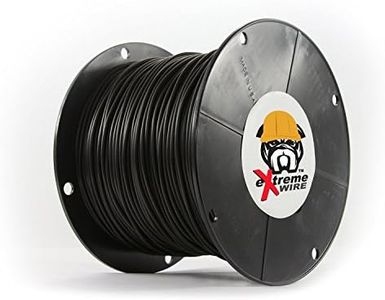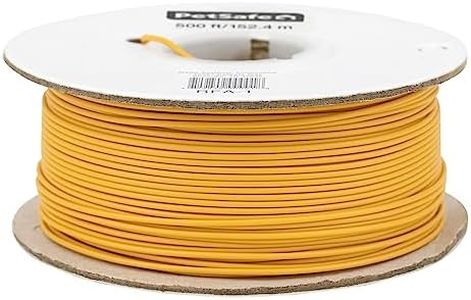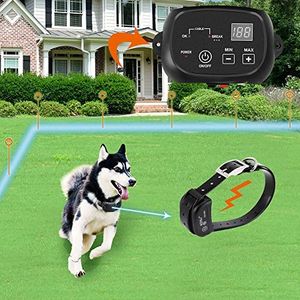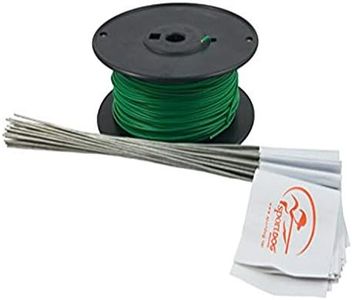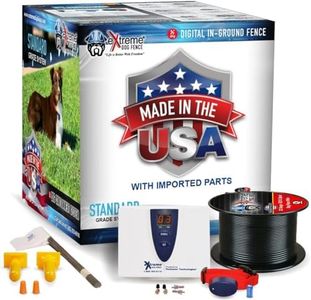We Use CookiesWe use cookies to enhance the security, performance,
functionality and for analytical and promotional activities. By continuing to browse this site you
are agreeing to our privacy policy
10 Best Wired Dog Fences
From leading brands and best sellers available on the web.Buying Guide for the Best Wired Dog Fences
Choosing a wired dog fence is an important decision for ensuring the safety and freedom of your pet within a set area. It's a solution many pet owners consider to contain their dogs in a yard without the need for visible physical barriers. To select the best wired dog fence for your needs, you should understand which features will suit your property, your dog's size and behavior, and how much flexibility and effort you want to invest in installation and maintenance.Coverage AreaCoverage area refers to the maximum perimeter the fence system is capable of enclosing. This matters because it determines whether the system can effectively cover your entire yard or the specific section you want. Coverage is usually measured in acres or square feet. Small yards might need a system that covers up to 1/3 of an acre, medium yards between 1/3 and 1 acre, and large properties may require coverage over multiple acres. You should measure the area you want your dog to access and ensure the system can handle at least this much, keeping in mind that sloping land or obstacles can impact effectiveness.
Wire Gauge and QualityWire gauge is the thickness of the wire used to transmit the signal around your yard. Thicker wire (lower gauge number, like 14 or 16 gauge) is more durable and less likely to break, which is important for long-term reliability especially if you plan to bury it. Thinner wire (higher gauge number, such as 20 gauge) is often cheaper but can be more prone to damage. Choose a wire gauge that matches your yard’s needs, local soil conditions, and the permanence you want. For rocky or high-traffic areas, a thicker wire is usually a better option.
Correction Levels and CustomizationCorrection levels refer to the range of static stimulation or audible warning that the collar delivers if your dog approaches the boundary. Some fences feature a single correction level, while others allow you to adjust settings to your dog’s size, temperament, and sensitivity. Systems with multiple levels or customization options are more versatile, especially for multi-dog households or sensitive breeds. If your dog is very timid or stubborn, having the ability to fine-tune the correction is especially helpful for effective and humane training.
Ease of InstallationEase of installation covers how simple it is to set up the wire and transmitter around your property. Some systems are designed for do-it-yourself installation, offering clear guides and tools, while others might require professional help due to complexity or larger areas. Yards with existing fences, gardens, or hardscaped zones can complicate the process. Consider your comfort level with digging, burying wire, and handling basic tools. If you want less work or have complicated landscaping, look for a system that supports above-ground installation or comes with helpful layout aids.
Collar Compatibility and ComfortCollar compatibility means making sure the collar receiver (which detects the boundary and delivers corrections) fits your dog comfortably and works well with their size and coat. Some collars are made for larger breeds and might be too bulky for small dogs. Others have adjustable straps and lightweight designs suitable for most dogs. If you plan on using the system for multiple dogs, check if the system supports extra collars. Choose a collar that’s both effective and comfortable for your pet to wear for longer periods.
Water Resistance and Weather DurabilitySince the system and the collar will be used outdoors, water resistance and overall durability are crucial. Collars and transmitters should be able to withstand rain, mud, and everyday outdoor use. Water resistance is especially important if your dog may swim or play in wet conditions. Look for those labeled as waterproof or at least highly water-resistant, and make sure the wire insulation is rated for in-ground installation to avoid damage from moisture.

